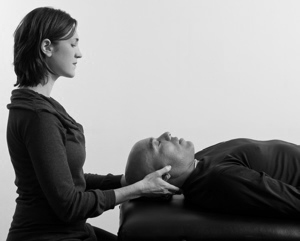Alexander Technique
The Alexander Technique provides a doorway into a more playful and whole connection of the body and mind. As students and teachers of the technique we are looking for a sensation of ease and encouraging the body's natural buoyancy and balance with the environment. The method can be used to rehabilitate injuries, ease trauma, or as a starting place for everyday activities, sports, and the performing arts. It is essentially a practice of re-learning how to learn; how to learn movement, how to learn an art, how to learn Pilates, so that there is less unwanted tension and more natural ease and grace.
Margi Sharp Douglas, owner and founder of the Pilates Garage, has been certified to teach Alexander under master ATI (Alexander Technique International) teacher Chloe Wing in New York City. An MFA graduate of Columbia University's acting program, Margi has been practicing the Alexander work as a performer but also as a movement teacher. Margi is a founding member and teacher for Magis Theatre Company and has been teaching the Alexander work to her fellow Magis actors, incorporating it into their vocal and physical warm ups for several years. She has also found the work invaluable to many of her Pilates clients at the Pilates Garage.
The Sessions
In an Alexander session the teacher uses what is called "listening hands" to help the student find ease in his or her body. We often start with the head and neck relationship, as coming out of a freeze or holding there can open up freedom in the entire spine.
We may spend part of the session on the table, asking your body to accept the support of the table and develop the skill of taking away unnecessary effort.
An important skill that the student learns is "body mapping", or sharpening their understanding of how the body is constructed. By changing your understanding of how you are meant to balance your bones, you can improve your habits in daily life.
Once the student has developed an understanding of the technique, we can take it into action. Singers, dancers, and actors have found an incredible release and improvement of their performance skills.
Standing or sitting in a chair with an awareness of Alexander principles is a simple way of opening up new movement patterns in the body that can be transferred to walking, running or any daily activity.
The challenge for the student is to maintain ease and balance throughout the activity.
The goal of any session is to give the student the skills and understanding to make the technique their own, so they walk out feeling more at ease and free in their own bodies.
Alexander Photos by Ian Shand.








